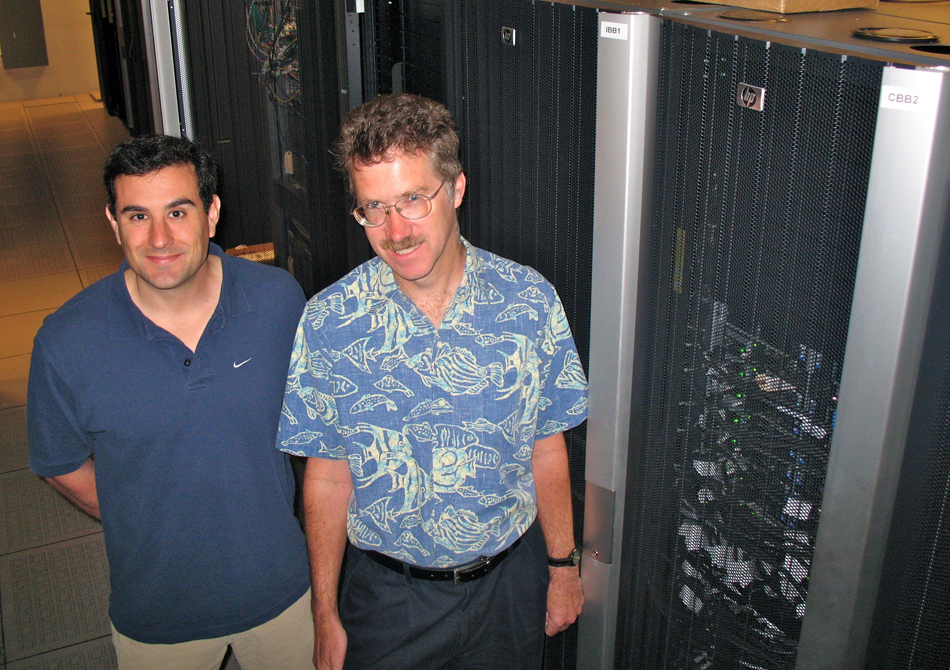
UC Santa Barbara's Center for Scientific Computing (CSC) has expanded computing resources for campus researchers with a new, state-of-the-art, high-performance, $1 million computing cluster.
The new Hewlett-Packard cluster has the computing power of 12 TeraFLOPS, or 12 trillion floating point operations per second. It will fulfill the need for calculations and simulations that are too large for desktop computers or workstations, but below those normally run at the handful of national supercomputing centers.
For UCSB research groups that do very large calculations at national supercomputing centers, the new system provides a test bed for code development and testing before a project is moved into production on a supercomputer.
"UCSB has an acute need for large-scale computation across a wide array of disciplines," said Frank Brown, professor in the Department of Chemistry and Biochemistry, principal investigator of the new computing cluster, and co-director of CSC. "The new cluster will be a powerful resource for many research groups and for students who will use the system in their coursework and thesis projects."
These new computing resources include access to the expertise of CSC's support staff. The new computing capability will allow CSC to pursue collaborations with external academic and industrial partners, further cementing its leadership role in computational research in science and engineering.
"This advanced capability offers a unique opportunity to launch new research efforts with our collaborators across many of the science and engineering disciplines within the California NanoSystems Institute (CNSI)," stated David Awschalom, Peter J. Clarke director of CNSI, and professor of physics and electrical and computer engineering. "We are delighted that our Center has established this facility for advanced modeling and simulation."
The CSC has provided more than 3.7 million hours of computer time to UCSB researchers over the last six months, for research projects in such diverse areas as Alzheimer's disease, earthquake modeling, and fuel cell design. This figure is expected to more than double with the new computing system.
Housed at Elings Hall, CSC is a collaboration between CNSI and the Materials Research Laboratory (MRL). The other co-director of CSC is Paul Weakliem, information technology director, CNSI. Other principal investigators of CSC, in addition to Brown, are Glenn Fredrickson, professor in the Department of Chemical Engineering and director of the Mitsubishi Chemical Center for Advanced Materials; Chris Van de Walle, professor in the Materials Department; Carlos Garcia-Cervera, professor in the Department of Mathematics; and John Gilbert, professor in the Department of Computer Science.
The new computing system was set up with funding from the National Science Foundation's program for Major Research Instrumentation, and additional UCSB-based funding from CNSI, MRL, the College of Engineering, the College of Letters and Science, and the Office of Research.
Related Links



